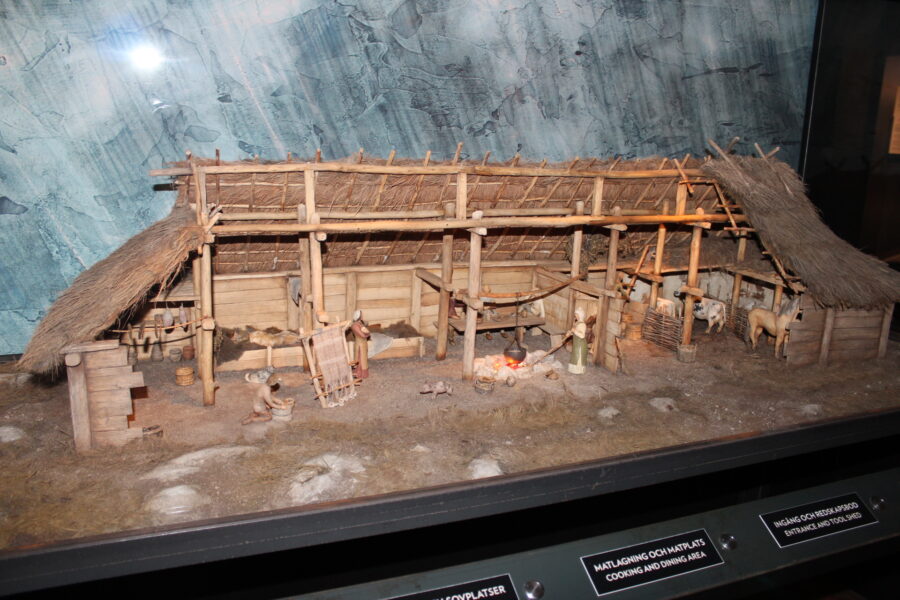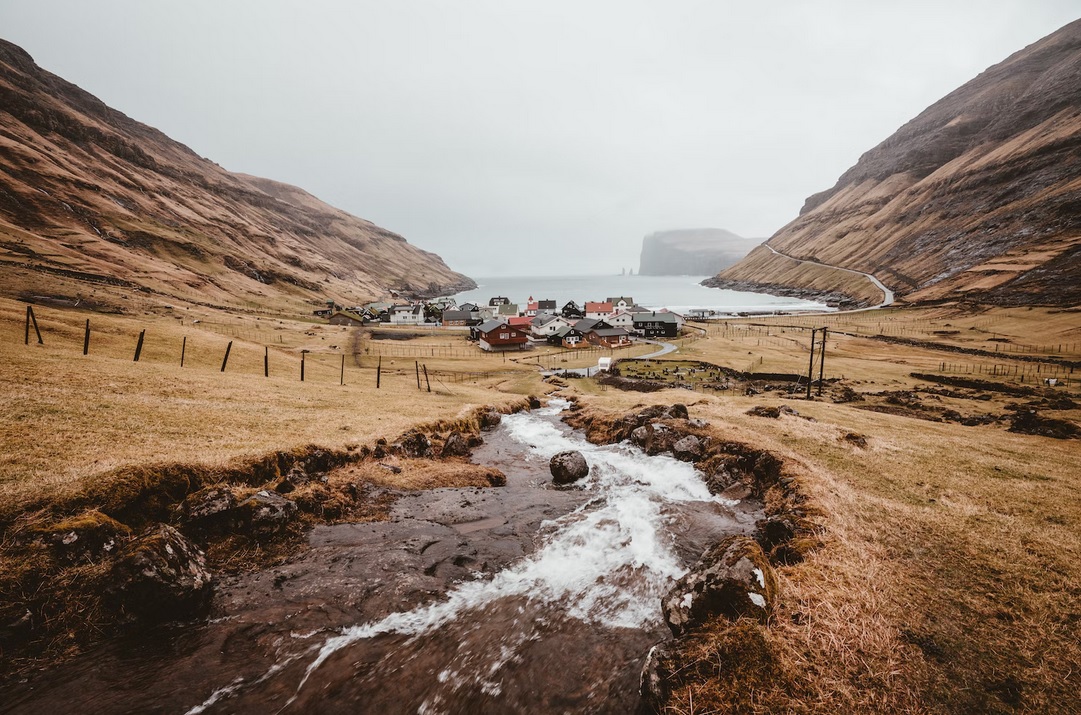NordenBladet – Streymoy, also known as Strømø, is the largest of the Faroe Islands and is home to the picturesque village of Kvívík (Kvivig). This island is a popular tourist destination, offering a wealth of natural beauty, cultural heritage, and outdoor activities for visitors to enjoy. Here is an overview of what you can expect from your visit to Streymoy and Kvívík.
Weather and Climate: The Faroe Islands have a temperate maritime climate, characterized by mild winters and cool summers. The average temperature in the summer months is around 12°C, while in the winter months it is around 4°C. Rain is common throughout the year, but the amount of precipitation varies depending on the time of year. Despite the rain, the islands are known for their stunning landscapes and dramatic cliffs, making them a popular destination for outdoor enthusiasts and photographers.


Faroe Islands (Photo: 2 x Unsplash)
History: The Faroe Islands have a rich cultural heritage, with a history dating back to the Viking Age. Streymoy and Kvívík have played an important role in the island’s history, and there are several historic sites and monuments that visitors can explore. In Kvívík, for example, you will find the remains of a Viking settlement, where you can learn about the island’s early history and see how people lived in the Viking Age. There are also several museums and cultural centers on Streymoy, where you can learn about the island’s history and cultural heritage.
Viking-era longhouses and burial mounds are also an important part of the history of the Faroe Islands, which were settled by the Vikings in the 9th century. These artifacts can be found throughout the Faroe Islands, offering tourists and locals alike a unique glimpse into the past.

Tjornuvik, Streymoy, Faore Islands (Photo: Unsplash)

Viking-era longhouse (Photo: NordenBladet)
Read also:
Scandinavian history & Norse culture: Viking-era longhouses and burial mounds
EXHAUSTIVE OVERVIEW: who were the ancient Scandinavian origin Vikings and when was the time of the Vikings?
In comparison to other Scandinavian countries, the Faroe Islands have a unique and well-preserved collection of Viking-era artifacts, including longhouses and burial mounds. The islands also have a rich cultural heritage, with many traditional Faroese buildings and settlements still standing today, providing a unique and fascinating window into the history of the Viking era.
Historical Sites: In addition to the Viking settlement in Kvívík, there are several other historical sites and monuments on Streymoy that visitors can explore. For example, the Tinganes Peninsula, located in the capital city of Tórshavn, is the oldest part of the city and is home to several historic buildings, including the Parliament building and the Prime Minister’s office. Another important historical site on Streymoy is the Slættaratindur Mountain (also known as Flat peak), which is the highest peak on the Faroe Islands and offers stunning views of the surrounding landscape.
Read also:
Tórshavn: A fascinating capital of the Faroe Islands
Outdoor Activities: Streymoy and Kvívík offer a wealth of outdoor activities for visitors to enjoy. From hiking and fishing to bird-watching and wildlife tours, there is something for everyone. One of the most popular outdoor activities is hiking, with several trails and paths winding through the island’s stunning landscapes. Visitors can also explore the island by bike, take a wildlife tour to see seals, whales, and other wildlife, or go fishing to catch Atlantic salmon or cod.
Faroe Islands – WONDERFUL TRAVEL DESTINATION for bird watchers and photography fans
Fascinating Facts: One of the most fascinating facts about Streymoy and Kvívík is that they are part of the Faroe Islands, a self-governing territory within the Kingdom of Denmark. The Faroese people have a rich cultural heritage and unique language, which they have preserved despite centuries of Danish rule. Another fascinating fact is that the islands are home to several unique bird species, including the puffin and the Arctic tern, making them a popular destination for bird-watching enthusiasts.
In conclusion, Streymoy and Kvívík offer a wealth of natural beauty, cultural heritage, and outdoor activities for visitors to enjoy. From exploring historical sites to enjoying the great outdoors, there is something for everyone on this beautiful and diverse island. Whether you are interested in history, culture, or nature, a visit to Streymoy and Kvívík is a must for anyone visiting the Faroe Islands.
Featured image: Tjornuvik, Streymoy, Faore Islands (Photo: Unsplash)
